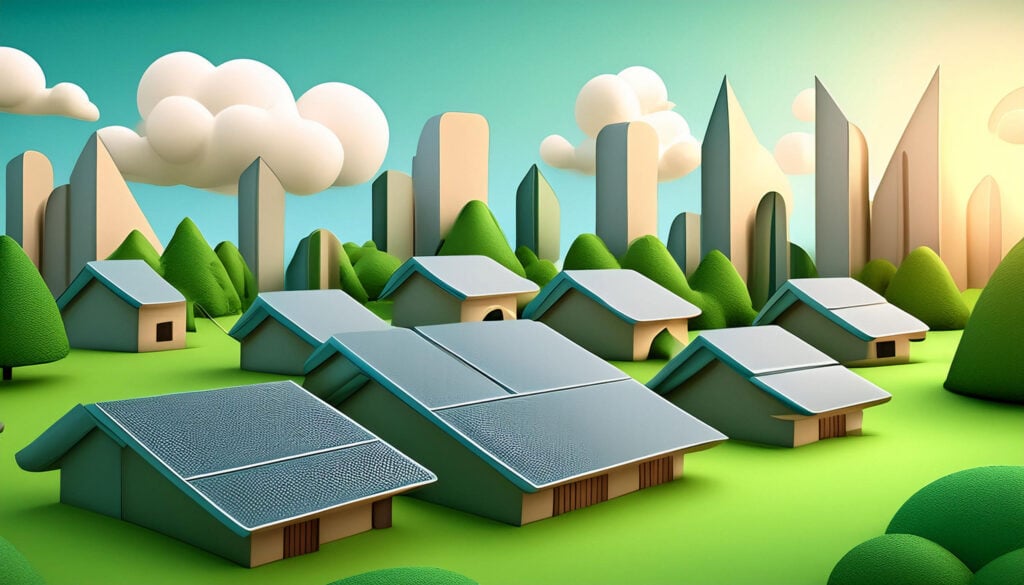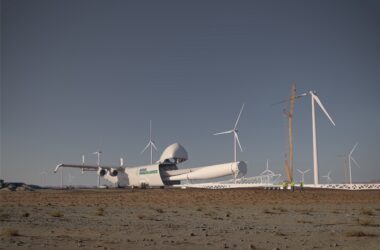As the world looks for cleaner, more sustainable energy sources to fight climate change, solar photovoltaics (PV) has emerged as one of our most promising solutions.
Solar is by far the largest, most reliable source of energy worldwide, yet we are not using it to its full potential.

As you can see from the image above, the sun can provide us with 860,000 times more energy than we need each year. That means we’re wasting the opportunity to capitalise on this energy source.

In Britain, Solar broke the record for weekly output (between 21st and 28th June 2018) for the first time, producing 533 gigawatt hours of power, more than Gas, Nuclear, Wind, and the rest, generating 27.8% of all energy supplies at one point. During that seven-day period, it also generated 75GWh on five of the seven days, which was another record. In the first, solar output also hit more than 8GW for eight consecutive days.

The next question is, where would we put the solar panels if we capitalise on this now? We obviously need somewhere sunny, and one of the best places for this is the Sahara Desert, not only due to the amount of sun it gets but also because there is little to no life in this area whatsoever, so the issue of disturbing natural habitats is minimal, if not non-existent.
Mehran Moalem, PhD, UC Berkeley Professor and Expert on Nuclear Materials and Nuclear Fuel Cycle, states that “If we cover an area of the Earth 335 kilometres by 335 kilometres with solar panels, even with moderate efficiencies achievable easily today, it will provide more than 17,4 TW power. This area is 43,000 square miles. The Great Saharan Desert in Africa is 3.6 million square miles and is prime for solar power (more than twelve hours per day). That means 1.2% of the Sahara Desert is sufficient to cover all of the energy needs of the world in solar energy.”
Recent technological advancements and declining costs have made solar PV more attractive. Rooftop solar photovoltaics (RTSPV) are crucial in decentralising energy production. This article explores the global potential of RTSPV and the costs associated with realising this potential.
Looking ahead to the not-too-distant future, it’s been estimated that 2030 energy consumption will rise to 715 petajoules.
The Land Art Generator Initiative has developed this map where the chosen areas are based on the required location (496,805 square kilometres) needed in 2030. The map is also based on the assumption of 20% operating efficiency of collection devices and that there will be 2000 hours per year of natural solar input of 1000 watts per square metre striking the surface of the panels, which would need to be distributed around the world to localise as much as possible plus receive 24/7 sunlight.

To put this into context, that’s the same amount of money that the world spent on the military and its weapons over three years ($1.7 trillion per year/$5.1 trillion), what the U.S. spent on Wars in the Middle East and Asia since 2001 ($5.6 trillion), and the amount of money Americans spent on fast food over 13 years ($5.08 trillion).
What are Photovoltaics ( Solar Energy )
Photovoltaics, or PV for short, is a technology that converts sunlight directly into electricity. It works by using solar cells made of semiconductor materials like silicon.
When sunlight hits these solar cells, it knocks electrons loose from their atoms, allowing them to flow through the material to produce electricity. This process is called the photovoltaic effect, the basic principle behind solar panels. Solar panels comprise many individual solar cells that are connected to produce a usable amount of electricity.
The more solar cells in a panel and panels in an array, the more electricity can be generated. PV systems can be installed on rooftops, on the ground, or even integrated into buildings. They are silent, have no moving parts, and produce no emissions, making them a clean and renewable energy source. PV technology has advanced significantly in recent years, becoming more efficient and cost-effective. As a result, the use of solar energy has multiplied worldwide.
PV is now used in various applications, from small-scale systems that power individual homes or businesses to large-scale solar farms that generate electricity for entire communities. As concerns about climate change and the need for sustainable energy sources continue to grow, PV will likely play an increasingly important role in meeting the world’s energy needs.
The cost may decrease as the cost of producing power from solar energy declines. According to a report on Business Insider, it now only costs $50 to produce one megawatt-hour of solar power, a decrease of 86% since 2009, whereas coal remains high at $102.
Of course, we don’t have to cover the Sahara in solar panels. There is plenty of under-utilised existing land. A recent study analysed 130 million km2 of global land surface area, identifying 0.2 million km2 of rooftop area suitable for solar PV installation. This rooftop area represents an incredible 27 PWh yr−1 of electricity generation potential, with 40–280 $ MWh−1 costs. To put this into perspective, the current (2018) yearly global electricity demand could be met by using just 50% of the global solar PV rooftop area.

The potential for RTSPV varies significantly across regions, with Asia (47%), North America (20%), and Europe (13%) accounting for the majority. Notably, China (4.3 PWh yr−1), the USA (4.2 PWh yr−1), and India (1.7 PWh yr−1) have the highest yearly potential. These findings highlight the immense opportunity for countries to harness the sun’s power and reduce their reliance on fossil fuels.
Realising its full potential would require significant investment, with capital expenditure (CAPEX) ranging from 840 to 3874 $ kW−1 of installed capacity. However, the levelized cost of electricity (LCOE) for RTSPV has decreased in recent years, making it increasingly competitive with conventional energy sources.
The cost of attaining RTSPV potential varies considerably between countries. India and China have the lowest costs at 66 $ MWh−1 and 68 $ MWh−1, respectively, while the USA (238 $ MWh−1) and the UK (251 $ MWh−1) have some of the highest costs. These differences can be attributed to solar insolation, installation costs, and government policies.
Despite this enormous potential, several barriers must be overcome before we can accelerate its adoption. One major challenge is the high upfront costs, particularly in low-income countries where the capital investment required can be several times the annual GDP. Governments and international organisations must work together to provide financial support and incentives to enable the deployment of RTSPV in these regions.
Another crucial aspect is the integration of RTSPV into existing energy systems. The intermittent nature of solar energy requires the development of smart grids and storage solutions to balance supply and demand. Policies and market mechanisms that encourage prosumer participation and facilitate the integration of decentralised energy sources will be essential in the transition to a more sustainable energy future.
The potential of rooftop solar photovoltaics is immense, offering a promising pathway to reduce greenhouse gas emissions and meet the growing electricity demand. With technological advancements and declining costs, RTSPV is becoming increasingly viable and cost-competitive. However, realising this potential will require significant investment, international cooperation, and supportive policies. We can work towards a cleaner, more sustainable energy future for all by harnessing the sun’s power.
TLDR:
- The sun provides more than enough energy to meet global demands, yet we underutilize solar power
- Recent advancements in solar energy efficiency and declining costs make it a promising solution
- The Sahara Desert is an optimal location for solar panel placement, with minimal impact on natural habitats
- A global solar energy project could cost $5 trillion, but this is comparable to other global expenditures
- Investing in solar energy is crucial for meeting future energy demands and reducing our carbon footprint








